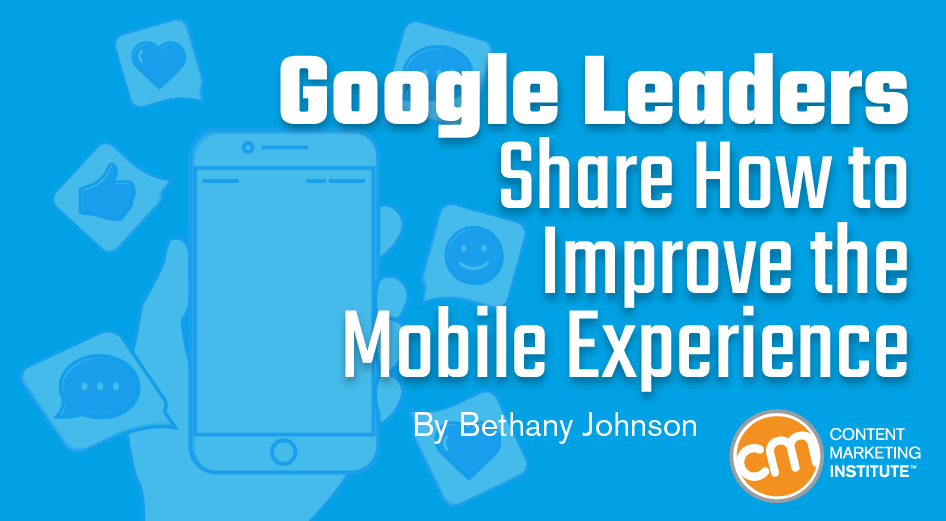Alana Vieira, Google’s product marketing manager of mobile experiences, says that those high expectations are an indication of an empowered user group who expects helpful, personal and frictionless mobile experiences across the board. In her Intelligent Content Conference presentation, Customer Experiences: One Step, One Second, Alana shares how to deliver a user experience that can transcend brand loyalty and outdo your competitors’ offerings. And if that isn’t attractive enough, she argues that your brand’s user experience can (and should) compete with the users’ best-ever experience. Beyond personalization (each user) Alana redefines the phrase ”relevant experience” by thinking beyond typical retargeting tactics. Beyond streamlining (each step) Next, Alana says, look at each step in a user’s experience as a separate experience. “Between 2009 and 2018, they were actually able to increase their market share from 9% to 18%.” Beyond speed (each second) You know what site visitors do if a page fails to load within a certain time. Google’s new mobile speed scorecard sorts up to 10 URLs by loading speed. Landing page performance report What is the landing page problem leading to slower load time? And to help equip marketers improving load times, Avery offers AMP or accelerated mobile pages – landing pages that load 85% faster than standard mobile pages. Within two seconds, site visitors are immersed in well-produced, entertaining, inspiring content that seems to leap off the page.

Google’s recent rollout of mobile-first indexing proves brands willing to (once again) put users first will look better in the eyes of the search giant.
But search users have high expectations – they expect the exact information they seek to be immediately available in an easy-to-comprehend way in a format they prefer. How can you adequately put users who have such high expectations first?
Alana Vieira, Google’s product marketing manager of mobile experiences, says that those high expectations are an indication of an empowered user group who expects helpful, personal and frictionless mobile experiences across the board. Centering your team’s approach on assisting these consumers can transform your results.
In her Intelligent Content Conference presentation, Customer Experiences: One Step, One Second, Alana shares how to deliver a user experience that can transcend brand loyalty and outdo your competitors’ offerings. And if that isn’t attractive enough, she argues that your brand’s user experience can (and should) compete with the users’ best-ever experience.
Wishful thinking? Not at all, if you shift your focus strategically to these three areas:
To deliver the fastest, most relevant and assistive experiences, each user must be treated uniquely; each step must be considered an experience; and each second must count as much to you as it does to the user.
Beyond personalization (each user)
Alana redefines the phrase ”relevant experience” by thinking beyond typical retargeting tactics. The goal isn’t to scale content to reach as many target buyers as possible, but to deliver valuable experiences to an individual based on your shared history.
Hyundai’s site is a great example of this. While shoppers early in the buying process are offered an interactive landing page to sort and explore models based on individual preferences, more primed buyers are led to a page that displays local showrooms and seasonal deals.

The result? Higher foot traffic in those local dealerships, where increased volume affects the bottom line.
Ninety percent of leading marketers (those who in the last year exceeded their business goals) report personalization making a significant contribution to business profitability. The question is no longer whether to invest in personalization, it’s how to invest. “Spend time with your user data and your site analytics,” urges Alana.
“Maybe even recruit a data science team to help you understand how you can create these relevant experiences for users.” Of course, it’s important to do so in a responsible way with data that is intentionally shared with your brand.
Beyond streamlining (each step)
Next, Alana says, look at each step in a user’s experience as a separate experience. For inspiration, consider a brand that nails it, Domino’s Pizza. Instead of luring hungry customers to call in orders (the traditional step), the company created over a dozen ways to order to meet customers where they are. Examples include:
- Google Home
- Alexa
- Slack
- Facebook Messenger
- Text
- Tweet
- Car
- Smart TV
- Voice
- Wearables

“It seems you can get almost anything with a single click these days,” taunts the site’s landing page. “But we thought that was one too many.” And with that, the brand introduces consumers to…

COMMENTS